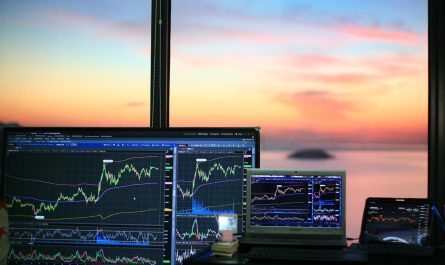Algorithmic trading has fundamentally changed the way traders carry out, analyse, and improve their strategies in today’s financial markets. However, a few misunderstandings about the concept still exist.
As a result, these false notions originate from an insufficient knowledge of the processes, the employment of quantitative models, and risk management in algorithmic systems. Let’s understand more in this article.
Myth 1: Algorithmic Trading Is Only for Large Institutions
Fact: It was a move by institutional traders to algorithmic trading that has set the path for others, but at present, advanced retail platforms and APIs have made it possible for individual traders to effortlessly implement automated strategies.
Brokers and fintech platforms provide low-latency order execution, backtesting environments, and integration with Python-based trading frameworks. Retail traders can develop or download a pre-coded stock or option buying algo strategy that supports the model by analysing delta, gamma, theta decay, and implied volatility to execute high-probability trades. Size is no longer the barrier to entry; it is strategy and discipline.
Myth 2: Algorithms Guarantee Profits
Fact: Algorithms do not forecast markets; they change depending on market behaviour within certain limits.
To name a few, statistical arbitrage, VWAP (Volume Weighted Average Price), or machine-learning-based sentiment strategies are strategies that still depend on probability rather than on certainty.
Market anomalies, flash crashes, and liquidity shocks, as a result, can affect any algorithm, even a finely tuned one. Thus, professional traders always have risk management to reduce drawdowns and keep capital preservation going.
Myth 3: Algorithmic Trading Requires Deep Coding Knowledge
Fact: No longer true. Traders can use online platforms to create, test, and implement their strategies by means of rule-based logic that does not entail coding.
Nevertheless, those who want to be extremely accurate can write code in Python, R, or C++ to use technical indicators like RSI divergence, Bollinger Bands breakout, or moving average crossovers
Myth 4: Only Quant Models Can Outperform Manual Trading
Fact: Human judgment is still not completely out of the picture. The advantage is mainly from combining numerical reasoning with market understanding.
The purpose of algorithms is to make the process of decision-making free of emotion, thus lessening the occurrence of biases such as fear or greed. However, traders still have to change the parameters in their reaction to the happenings in the world economy, the earnings, or the policies. For example, sudden increases in volatility during Federal Reserve meetings can artificially change a machine’s entry-exit efficiency if it is not being adjusted on the fly.
Myth 5: Algorithmic Trading Is Too Risky
Fact: The risk is a factor of how things are set up, not the level of automation. Inefficient algorithms worsen losses, but properly adjusted ones can tighten the execution and diversify the portfolio.
Traders apply backtesting on past data to evaluate performance across different market conditions. Sophisticated systems use machine learning models that are regularly updated to align with different volatility regimes. Besides, many brokers provide real-time market monitoring and triggers that limit the risk of a system-wide crash.
The Bottom Line
Algorithmic trading is not magic, it’s mathematics, logic, and disciplined execution. Myths are created when traders treat automation as a shortcut to instant profitability and underestimate the importance of risk parameters. The truth is that algos enhance human intelligence by taking away emotion and increasing order accuracy.
As markets continue to evolve with higher volatility and tighter spreads, the traders who combine quantitative models, risk management, and flexible thinking will be the ones to drive the next wave of innovation.
